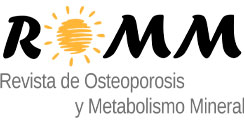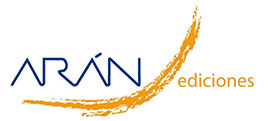Trabajo Original
Estudio de las deleciones de los genes GSTM1 y GSTT1 y del polimorfismo Ile105Val del gen GSTP1 en pacientes con enfermedad ósea de Paget
Usategui-Martín R, Corral E, Alonso M, Calero-Paniagua I, Carranco-Medina TE, Quesada-Moreno A, Sánchez-González MD, Hidalgo-Calleja C, Pérez-Garrido L, Montilla Morales C, Mirón-Canelo J, González-Sarmiento R, del Pino-Montes J
 Número de descargas:
4638
Número de descargas:
4638
 Número de visitas:
1857
Número de visitas:
1857
 Citas:
0
Citas:
0
Compártelo:
Fundamento: La enfermedad ósea de Paget (EOP) es un trastorno focal del hueso con aumento el número, tamaño y actividad de los osteoclastos. Algunos datos epidemiológicos apoyan la teoría de su relación con agentes ambientales tóxicos o infecciosos. Su interacción con algunas alteraciones genéticas predisponentes conducirían a la EOP. Las glutatión-S-transferasas (GST) intervienen en la metabolización de toxinas, al catalizar el ataque nucleofílico del sustrato fisiológico, glutatión reducido o GSH (g-Glu-Cys-Gly) sobre el centro electrófilo de un gran número de estructuras tóxicas. Estudiamos si la variabilidad de los genes GSTM1, GSTP1 y GSTT1 se relaciona con el riesgo a desarrollar EOP.Pacientes y métodos: Analizamos a 148 pacientes diagnosticados de EOP y a 207 individuos controles pareados en sexo y edad sin antecedentes de alteraciones óseas. Con DNA genómico obtenido de sangre periférica se estudió la presencia-ausencia de deleción en los genes GSTM1 y GSTT1, mediante PCR multiplex. El estudio del polimorfismo Ile105Val del gen GSTP1 se llevó a cabo mediante PCR y posterior digestión con la enzima de restricción BsmaI. Se analizó la distribución de genotipos mediante el test chi-cuadrado de Pearson. Cuando se encontraron diferencias estadísticamente significativas, realizamos una regresión logística multivariante para conocer el riesgo que puede generar la presencia de un determinado genotipo. Utilizamos el programa SPSS 21.0. Se consideraron diferencias estadísticamente significativas aquéllas con valores de p<0,05. Resultados: Encontramos diferencias en la distribución de la presencia-ausencia de deleción en el gen GSTM1; no ser portador de la deleción o serlo en heterocigosis en el gen GSTM1 confiere un menor riesgo a desarrollar EOP (OR=0,56, IC 95%: 0,36-0,87; p=0,011). En el estudio de los genes GSTT1 y GSTP1 no hubo diferencias significativas. Conclusión: La actividad detoxificadora disminuye cuando se heredan las dos copias delecionadas del gen GSTM1 al disminuir la actividad enzimática; se ha asociado con una mayor susceptibilidad para algunos tumores, hepatopatía alcohólica y otros problemas inflamatorios. No conocemos descripción de su asociación con la EOP. En los individuos portadores del gen GSTM1 delecionado en homocigosis se observa con más frecuencia EOP. Este hecho podría explicar los hallazgos epidemiológicos que asocian la EOP a la exposición a determinados agentes ambientales.
Palabras Clave: enfermedad ósea de Paget, glutation-S-transferasa, genética, polimorfismo.
Artículos Relacionados:
Trabajo Original: Relación genética entre las enfermedades pulmonares de origen ambiental u ocupacional y la osteoporosis: un enfoque bioinformático
Trabajo Original: Impacto funcional de polimorfismos del gen de la esclerostina sobre la metilación de ADN y la expresión génica
Editorial: Fracturas femorales atípicas: una rara complicación posiblemente debida a la acumulación de variantes genéticas raras
Trabajo Original: Estudio de la base genética de la reducción del Trabecular Bone Score relacionada con los inhibidores de la aromatasa
Nota Clínica: Adenocarcinoma de próstata metastásico y enfermedad ósea de Paget mandibular
Editorial: Análisis de las modificaciones epigenéticas en células óseas: ¿son los osteoblastos aislados de hueso un buen modelo para estudiar cambios en la metilación del ADN?
Trabajo Original: Análisis comparativo del epigenoma del tejido óseo y de osteoblastos primarios
Editorial: Enfermedad ósea de Paget
Revisión: Avances en el estudio de los mecanismos involucrados en la modulación de la expresión de esclerostina en células humanas
Trabajo Original: Identificación de variantes genéticas asociadas con la densidad mineral ósea (DMO) en el gen FLJ42280
Trabajo Original: Análisis genético de enzimas de la vía esteroidal asociadas a efectos adversos musculoesqueléticos delos inhibidores de la aromatasa
Nota Clínica: ¿Se puede diagnosticar una enfermedad genética en base a caracteres fenotípicos? A propósito de un caso de pseudohipoparatiroidismo en Ecuador
Trabajo Original: Polimorfismo A986S del receptor sensor del calcio y fracturas clínicas osteoporóticas
Nota Clínica: Melorreostosis: presentación de un caso clínico
Revisión: Papel de la metilación del ADN en la regulación de la osteoclastogénesis
Trabajo Original: Evolución de la DMO durante el tratamiento con inhibidores de aromatasa y su relación con el gen CYP11A1: estudio prospectivo de la cohorte B-ABLE
Revisión: ¿Qué son los microARNs? Posibles biomarcadores y dianas terapéuticas en la enfermedad osteoporótica
Trabajo Original: Epidemiología de la enfermedad ósea de Paget en un área de Barcelona
Revisión: Tratamiento de la enfermedad ósea de Paget
Trabajo Original: Asociación del polimorfismo 1G>2G de la MMP1 con calcificación de la válvula aórtica
Editorial: El dilema de la deficiencia en vitamina D en regiones soleadas, en jóvenes, o en pacientes osteoporóticas tratadas con vitamina D, podría explicarse por variantes genéticas comunes. ¿Hemos encontrado la piedra Rosetta de esta aparente contradicción?
Trabajo Original: Estudio funcional de los polimorfismos del promotor del gen de la esclerostina
Trabajo Original: Epidemiología de la enfermedad ósea de Paget en un área de Barcelona
Imagen en Osteología: Tibia en sable
Jesús Rubio Úbeda , Inmaculada Jiménez Monleón , Enrique Raya Álvarez
Artículos más populares
Revisión: Acción de la cerveza sobre el hueso
Aunque se ha demostrado que el exceso de alcohol e...
Trabajo Original: Resumen ejecutivo de las guías de práctica clínica en la osteoporosis postmenopáusica, glucocorticoidea y del varón (actualización 2022). SEIOMM
Esta versión actualizada de la Guía de osteoporosi...
-
Licencia creative commons: Open Access bajo la licencia Creative Commons 4.0 CC BY-NC-SA
https://creativecommons.org/licenses/by-nc-sa/4.0/legalcode

 Español
Español English
English


